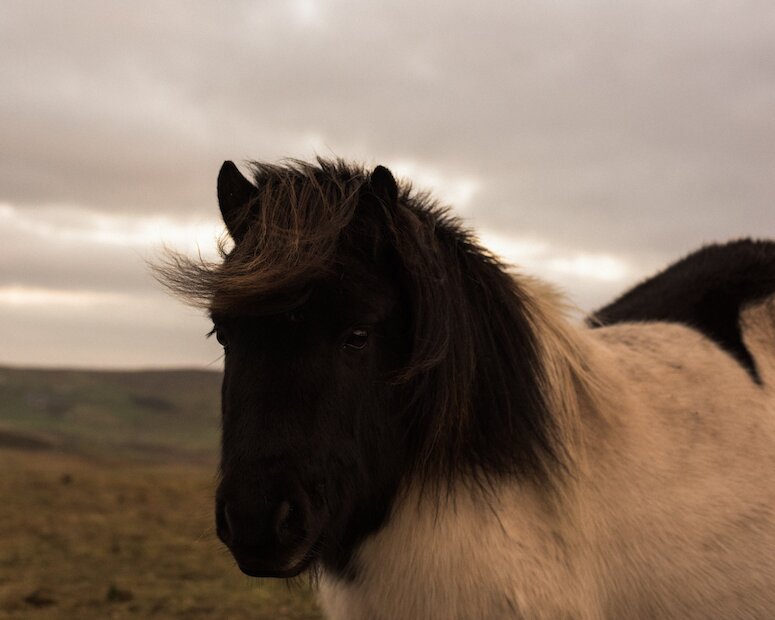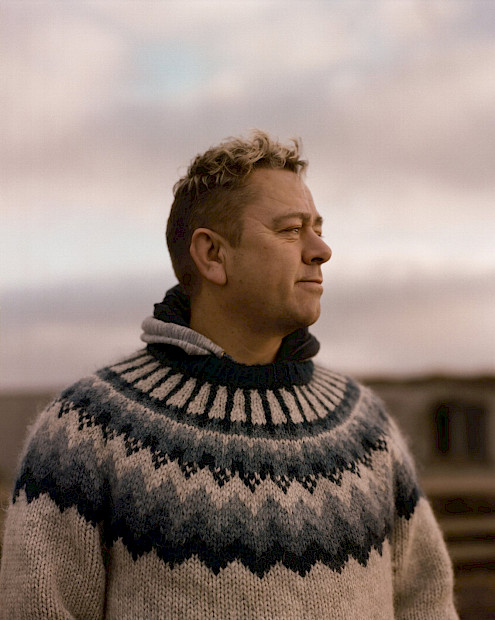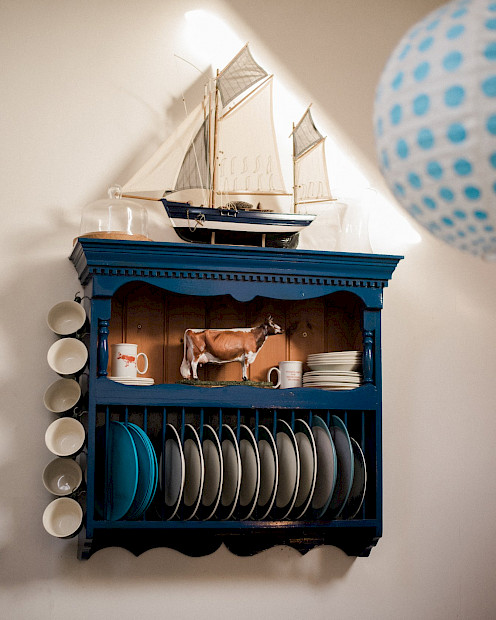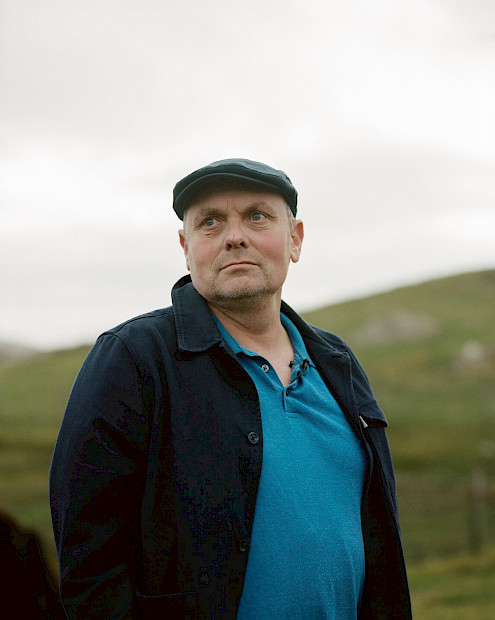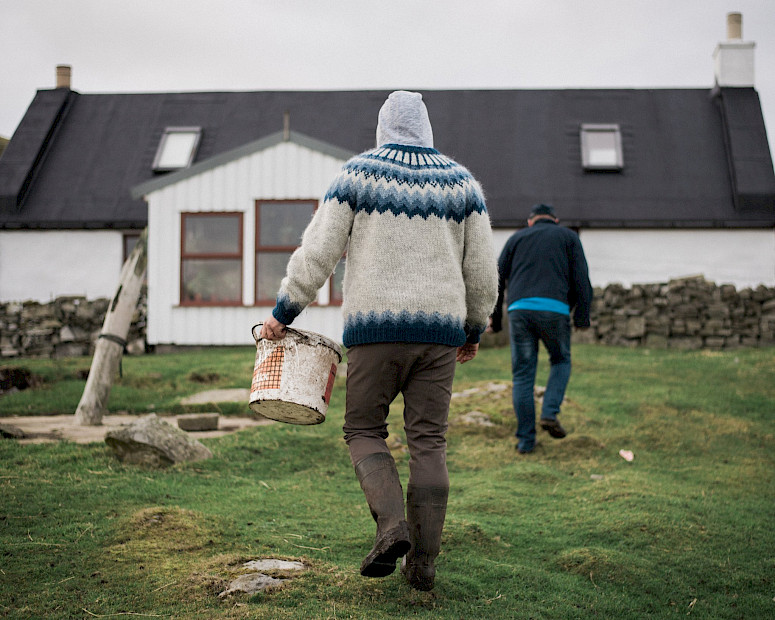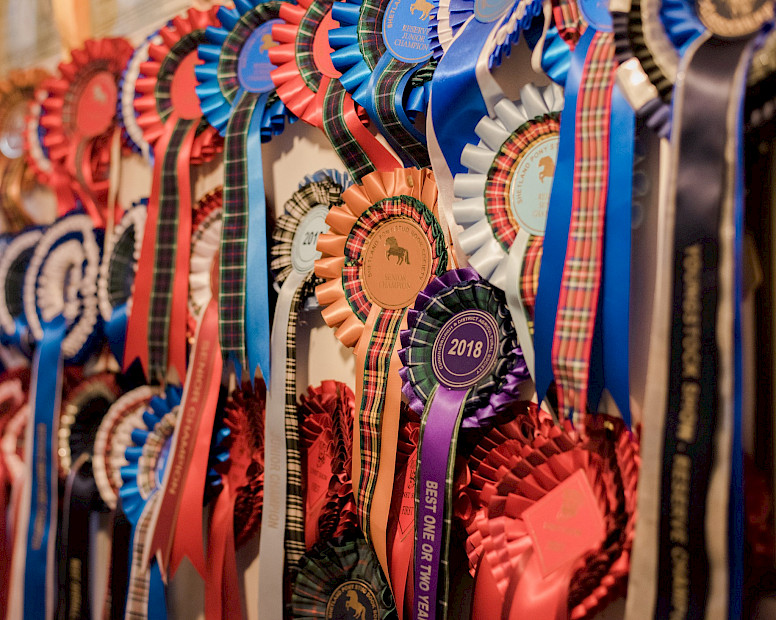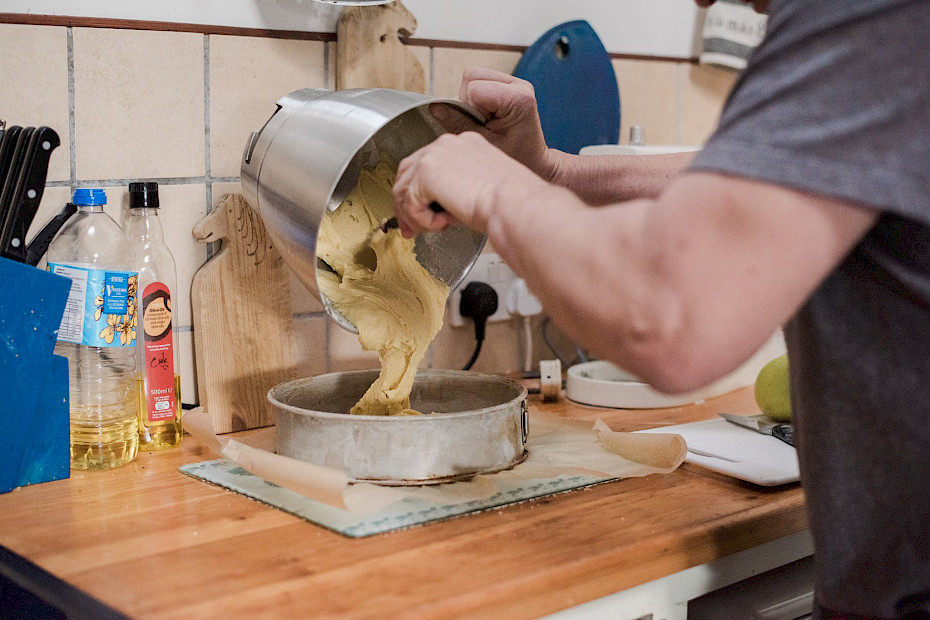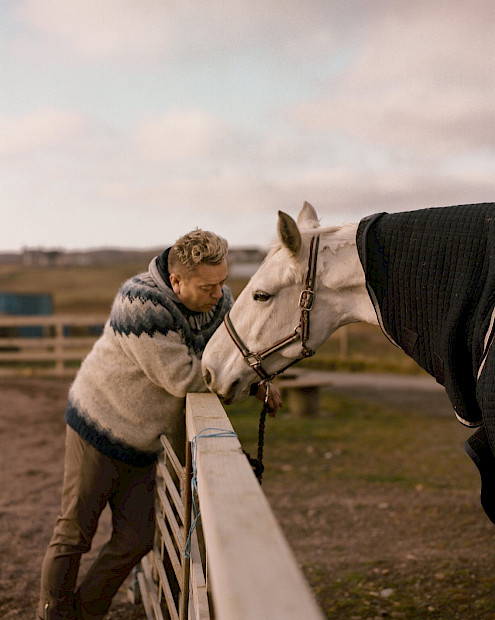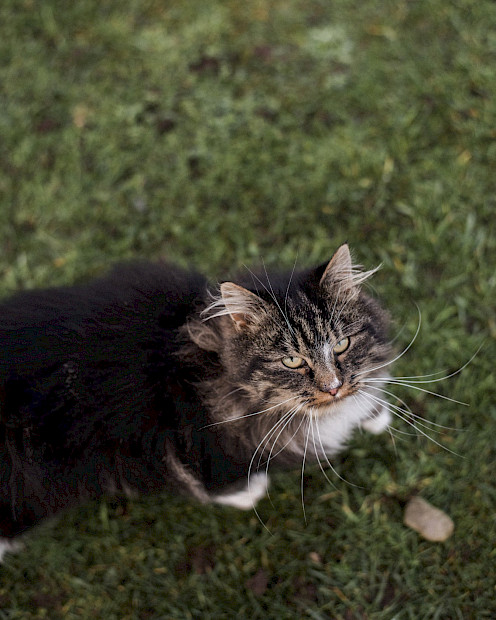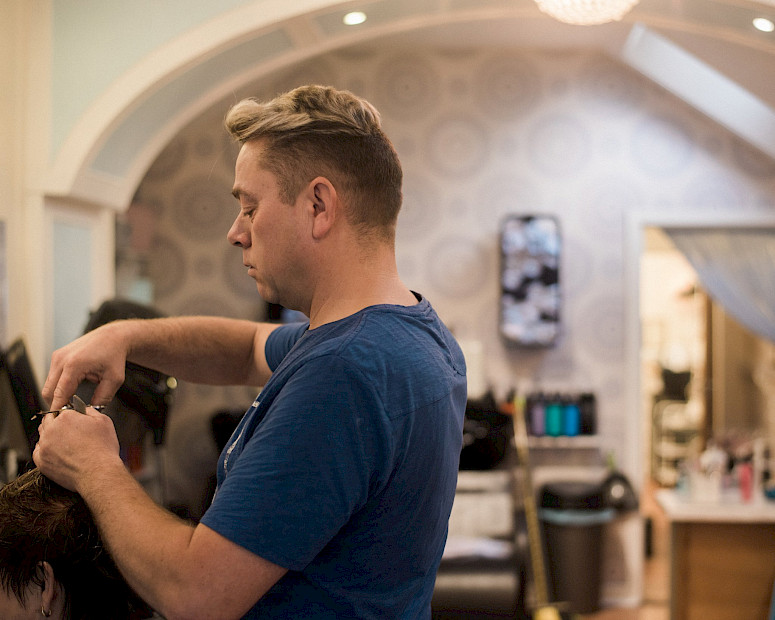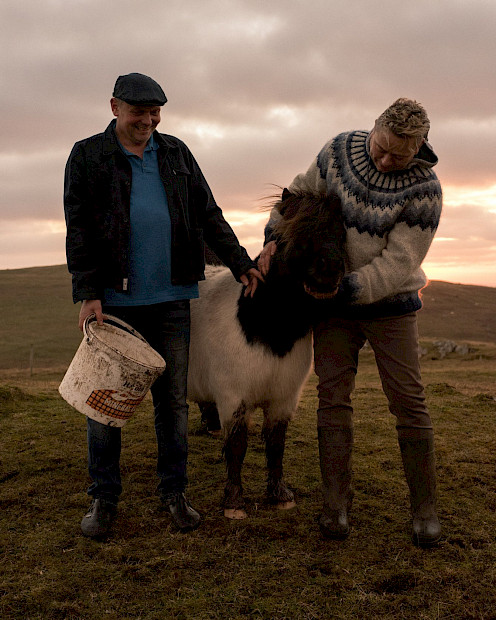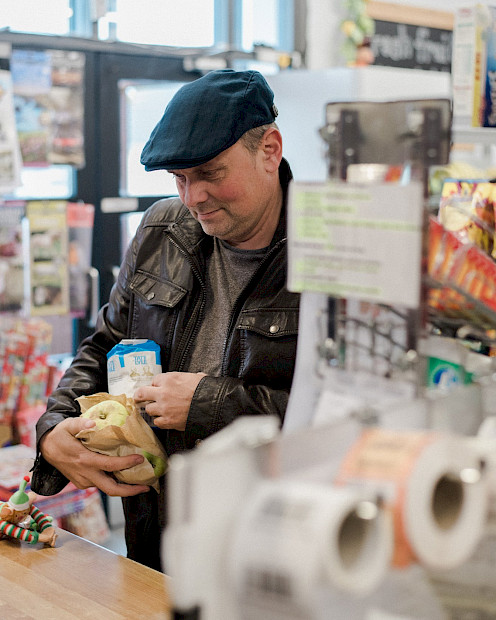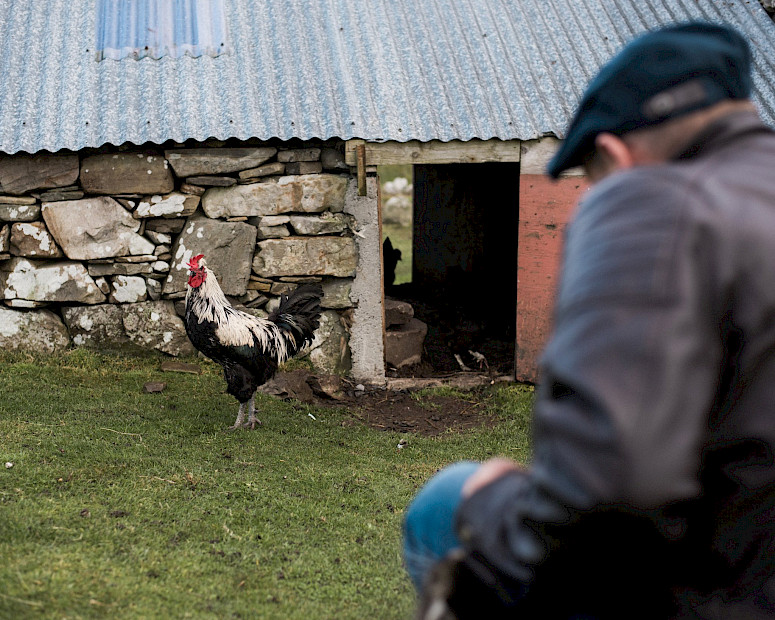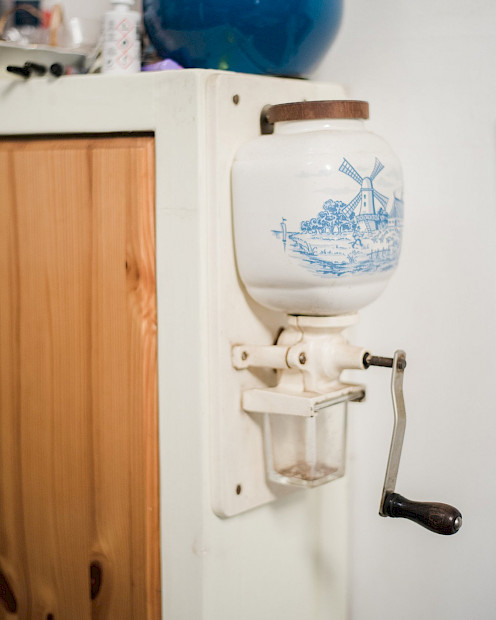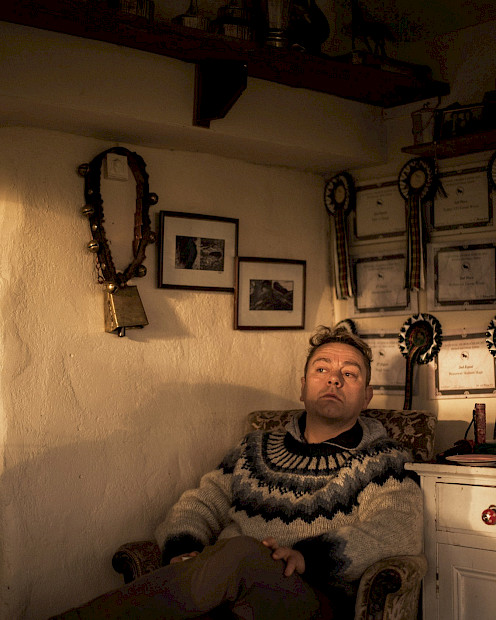Before our walk, we meet in the front porch of the little white Finnigarth crofthouse, Bjorn and Tore’s home just down a slope from the plateau, in a hollow that runs down towards the sea. The settlement dates back to the Viking Age, and it’s the only sign of civilisation round here. The plant-filled porch, which Bjorn and Tore built themselves, has a wall thickly lined with rosettes and a shelf almost collapsing under the weight of trophies. In the Shetland tradition of serving tea and ‘fancies’, Tore prepares tea and hands out slices of his delicious homemade apple cake. As they tell their story, punctured by lots of laughter, Bjorn occasionally peers out of the window to check on this summer’s new foals, bred from 15 mares, who are in a small field in front of the crofthouse.
Bjorn has been obsessed with ponies since he was eleven, when his grandad bought him a Shetland pony, a relative rarity in 1970s Norway. When he was 17, having graduated to a larger Icelandic horse, he left Norway for Iceland to work on a farm that had 200 Icelandic horses. When he returned for his hairdressing training, he had two of them in tow. “I’ve been dragging horses around my whole life,” says Bjorn, who was soon exploring the world of Icelandic horse competition, winning two bronze medals in gait competitions at the 1997 world cup. “Some people go on fancy holidays,” he says. “Horses are my expensive hobby.”
Tore, meanwhile, took over his family farm in Ringsaker, a few hours north of Oslo, at just 21, becoming known for breeding Telemark cattle, and casting a discerning eye over cattle competitions. Soon after the pair met in 1996, they decided to return to Bjorn’s first love, pooling their knowledge to breed Shetland ponies. Eventually, it made sense to visit the ancestral home of their favourite breed.
“The same thing that took me to Iceland took me to Shetland,” says Bjorn. Shetland became their holiday destination of choice, and they’d spend time with the Tait family and their Merkisayre stud on Burra isle, learning about Marshwood and other Shetland ponies. “We spent all our holidays here,” recalls Bjorn. “Instead of going to Spain or Greece or something, we always went to Shetland to see the ponies. We hated to go home. One day I said to Tore: I could easily move up here. I didn’t expect him to say yes to that, because it’s mostly me who’s a dreamer. But he did. So we sold everything and moved to Shetland.”
Shetlanders accept everything. You see all these different cultures and backgrounds up here, and everyone’s just accepted. You’re not judged for anything
